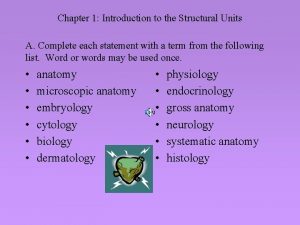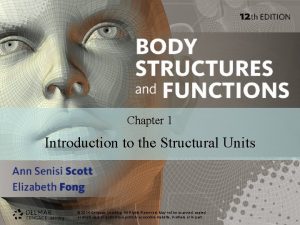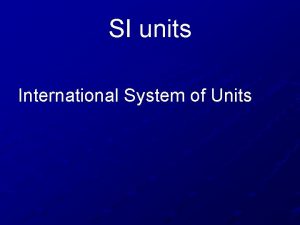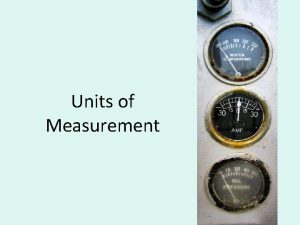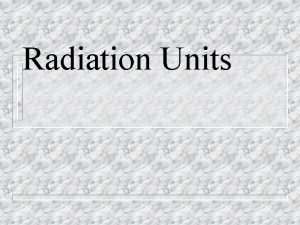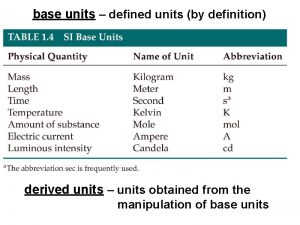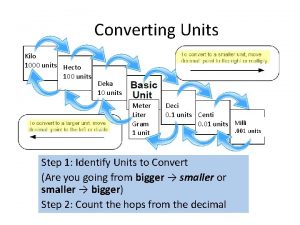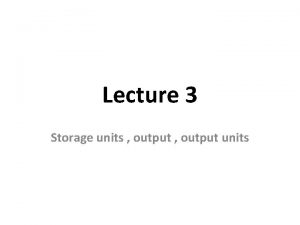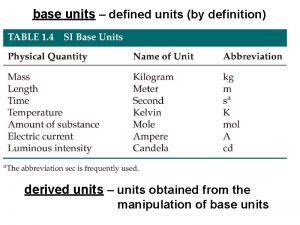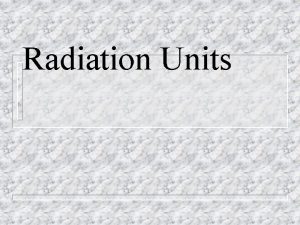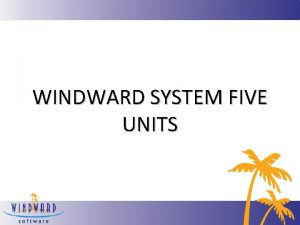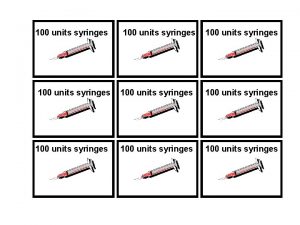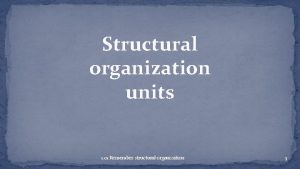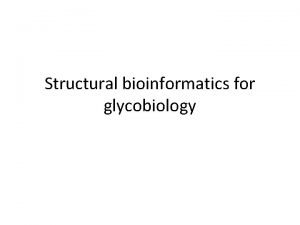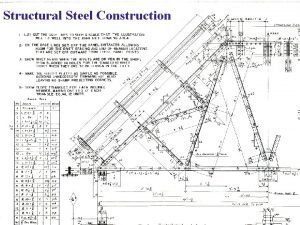Chapter 1 Introduction to the Structural Units A















- Slides: 15

Chapter 1: Introduction to the Structural Units A. Complete each statement with a term from the following list. Word or words may be used once. • • • anatomy microscopic anatomy embryology cytology biology dermatology • • • physiology endocrinology gross anatomy neurology systematic anatomy histology

1. The study of all life forms is biology 2. Through the study of microscopic anatomy we can extend the knowledge of body parts. 3. A study of blood tissue is called histology 4. The study of the nervous system is called Neurology. 5. Systemic anatomy is the study of the organs that make up parts of the organ systems.

6. Physiology Is the study of how our organs function. 7. The study of cells is called cytology. 8. The study of human cells from fertilization to embryology. birth is called 9. The study of the size and shape of an organ is called anatomy. 10. Endocrinology is the study of the hormonal system.

C. Multiple Choice. Circle the best answer 1. The body in anatomical position is a. Standing erect, face forward, arms at the sides, palms forward, feet parallel. 2. The vertical cut that divides the body into anterior and posterior sections is called d. coronal plane

3. The horizontal cut dividing the body into upper and lower sections is called the: 4. b. transverse plane 4. An imaginary dividing line useful in separating the body is a: d. plane 5. The lacrimal ducts are located in the c. orbital cavity

6. The formation and release of substance form a cell or structure is called: secretion 7. The oxidation of food molecules is called: b. respiration 8. Combination of simple molecules into more complex units to build new tissue is : d. synthesis 9. The build up and breaking down of cell material is called: metabolism

10. Maintenance of optimum cell functioning requires a balanced cell environment called: homeostasis

D. Label the two diagrams on this page. Refer to Figures 1 -1 and 1 -2 on page 3 of the textbook.

Match the letters in Column B with the most appropriate term in Column A. 1. J 2. I 3. F 4. E 5. B 6. G 7. C 8. H 9. A 10. d 1. Brain 2. Bronchi 3. Hypogastric region 4. Urinary bladder 5. Stomach 6. Mediastinum 7. Epigastric region 8. Heart 9. Vertebrae 10. eyes a. Spinal cavity b. Abdominal cavity c. Region just below the sternum d. Orbital cavity e. Pelvic cavity f. Pubic areas g. Midpoint of thoracic cavity h. Pericardial cavity i. Thoracic cavity j. Cranial cavity

E. Label and color the cavities of the body. Color posterior brown, the anterior yellow, the thoracic green and the abdominalpelvic blue. Refer to Figure 1 -3 on page 5 or the textbook.

G. Match the number on the abdominal region with the description below. Also refer to Figure 1 -4 on page 5 of the textbook 1. Left lumbar 6. Right lumbar 2. Right iliac 7. Left hypochondriac 3. Epigastric 8. Hypogastric 4. Right hypochondriac 9. Umbilical 5. Left iliac

Using the information you have learned regarding the regions of the body, complete the following statements. 1. The region superior to the right lumbar region is the right hypochondriac region. 2. The naval is in the umbilical region. 3. The region referred to as the left inguinal region may also be called left iliac region.

4. The region inferior to the umbilical region is the hypogastric region. 5. The heart is located in the epigastric region. 6. The stomach is located in the umbilical region. 7. The liver is in the right lumbar region. 8. The region superior to left inguinal region is the left lumbar region.

I. Which pairs of terms are incorrectly matched? 3. Teeth/orbital cavity 4. Movement/respiratory system 5. Caudal/posterior

J. Body Processes: Fill in the blanks to complete the statements on body processes. The functional activities that result in growth and repair of body tissue are called metabolism This function consists of two processes that have opposite effects, namely Anabolism and catabolism. The taking in of food and oxygen occurs in the anabolism state which builds up complex materials form simpler ones. The release of energy and carbon dioxide occurs in the catabolism state which is the breaking down of compex substances into simpler ones. These functions require a stable, cellular environment; maintaining this internal environment is known as homeostasis.
 Chapter 1 introduction to the structural units
Chapter 1 introduction to the structural units Chapter 1 introduction to the structural units
Chapter 1 introduction to the structural units Chapter 1 introduction to the structural units
Chapter 1 introduction to the structural units Phraseology
Phraseology Azzalure units
Azzalure units Absorption costing income statement
Absorption costing income statement Hình ảnh bộ gõ cơ thể búng tay
Hình ảnh bộ gõ cơ thể búng tay Ng-html
Ng-html Bổ thể
Bổ thể Tỉ lệ cơ thể trẻ em
Tỉ lệ cơ thể trẻ em Gấu đi như thế nào
Gấu đi như thế nào Chụp phim tư thế worms-breton
Chụp phim tư thế worms-breton Hát lên người ơi
Hát lên người ơi Các môn thể thao bắt đầu bằng tiếng bóng
Các môn thể thao bắt đầu bằng tiếng bóng Thế nào là hệ số cao nhất
Thế nào là hệ số cao nhất Các châu lục và đại dương trên thế giới
Các châu lục và đại dương trên thế giới
